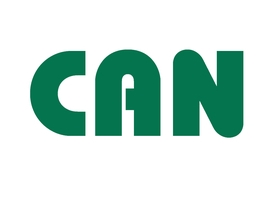CAN-bus was originally designed to meet the demanding needs of digital communication within vehicles. Because of the speed, simlicity and low-cost of it's implementation it is now becoming a standard for industrial communication next to RS485 and others. DPTechnics has extensive knowledge of the bus and designed univeral modules which use CAN-bus for communication.

Differential bus
The CAN-bus uses 3 wires (CANH, CANL, GND) for communication between nodes. The CANH and CANL signal form a differential signal pair. Differential signals are much more immune against external influences such as high voltage wiring, inductive loads, ... The protection is optimal when used with a twisted pair cable, we always advise to use DMX bus cable like the 'Van Damme Smart Control DMX 1 pair'.
Packages have an adress, not nodes.
Unlike other commmunication buses the CAN-bus assigns addresses to messages, not to nodes. Every node on the bus receives messages from other nodes in the bus. There is no such thing as a CAN-bus master, every node can transmit at will. Bus arbitration happens in the transceiver hardware and messages who have a lower address have higher priority. This allows the bus handle lot's of small messages without slowing down.
CAN-bus research
DPTechnics is a member of the KU Leuven relim research group in which we investigate new techniques to make the CAN-bus even more robuust than it already is. This way we can offer state-of-the-art robuust solutions to our customers. Correct bus termination for example isn't as simple as it looks.